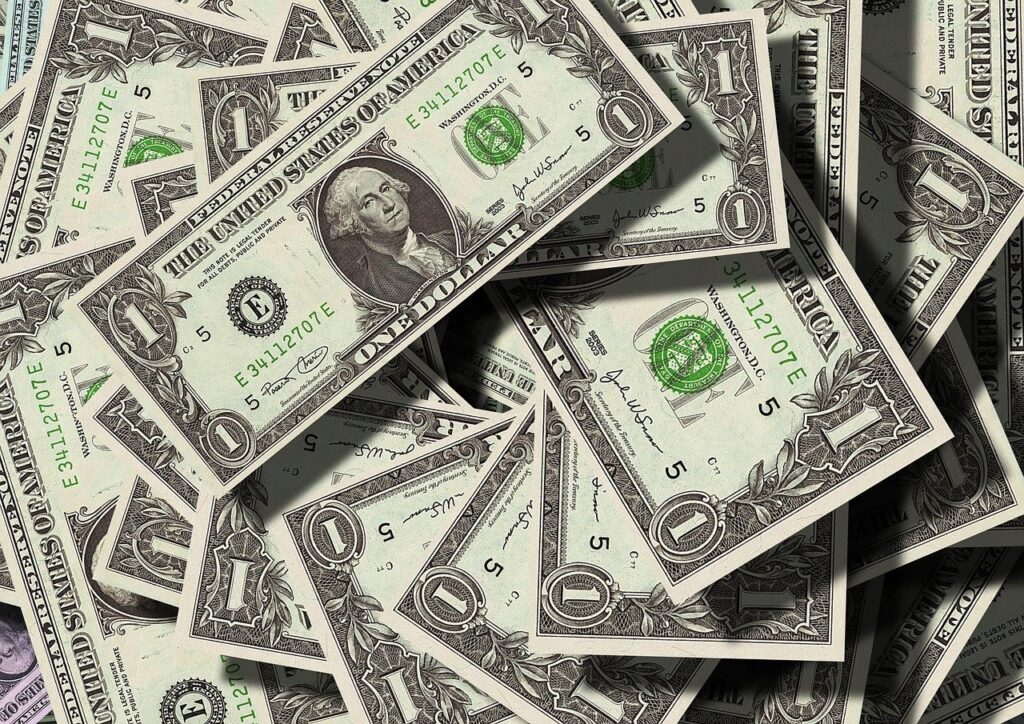Which currencies are pegged to the US dollar?
The US dollar is one of the most widely used currencies around the world, both as an official currency and for international trade beyond US borders. The dollar is divided into 100 units called pennies or cents. Below is a list of some of the economies that currently peg their currency to the US dollar.
Today, there are a number of countries that use the US dollar, such as the Caribbean Netherlands, i.e. Bonaire, Saba, Sint Eustatius. However, the dollar is used in many Latin American countries, such as Ecuador, El Salvador, Panama and Argentina. Zimbabwe uses the dollar as its official currency.
| Country | Region | Currency name | Code | Peg | Sedan |
| Bahrain | Middle East | Dollar | BHD | 0.376 | 2001 |
| Belize | Central America | Dollar | BZ$ | 2.00 | 1978 |
| Cuba | Central America | Convertible Peso | CUC | 1.000 | 2011 |
| Djibouti | Africa | Franc | DJF | 177.721 | 1973 |
| Eritrea | Africa | Nakfa | ERN | 15.000 | 2005 |
| Hong Kong | Asia | Dollar | HKD | 7.84 | 1998 |
| Jordan | Middle East | Dinar | JOD | 0.71 | 1995 |
| Lebanon | Middle East | Pound | LBP | 1507.5 | 1997 |
| Oman | Middle East | Rial | OMR | 0.385 | 1986 |
| Panama | Central America | Balboa | PAB | 1.000 | 1904 |
| Qatar | Middle East | Riyal | QAR | 3.64 | 2001 |
| Saudi Arabia | Middle East | Riyal | SAR | 3.75 | 2003 |
| United Arab Emirates | Middle East | Dirham | AED | 3.673 | 1997 |
Source: World Bank
The Americas
With large tourism influx from the US, the Caribbean is a myriad of pegged currencies, keeping the power of the tourist dollar stable. Aruba and the Netherlands Antilles, former Dutch colonies in the eastern Caribbean, peg to the US dollar, as do the islands that use the Caribbean dollar. These include Antigua, Dominica, St. Kitts, St. Lucia, St. Vincent and the Grenadines and Grenada. Barbados fixes its dollar with the US currency, and the Bahamas, Belize, Bermuda and Cuba are other island nations around the Gulf of Mexico that are also tied to the dollar. Bolivia, Ecuador, Guyana, Panama and Venezuela are mainland Central and South America with a fixed exchange rate.
Africa
Countries in Africa often use currency pegging, although many are linked to the CFA franc, two currencies used in Central Africa. Both are guaranteed by the French government, so ultimately the euro affects the international value. Several other African countries use the South African rand, part of a rand-based common monetary area in the south of the continent. Dijibouti and Eritrea link local currencies to the US dollar.
Middle East
Bahrain, Iraq, Jordan, Lebanon, Oman, Qatar, Saudi Arabia and the United Arab Emirates each use a peg to the US dollar. Unlike in Africa, the US dollar is the only currency used in the region to determine local exchange rates.
Especially in the oil-rich countries, a peg to the US dollar allows some financial stability for countries that depend on resource exports for income. Economies are less volatile than when they float on commodity market demand.
Asia
Hong Kong has been linked to the US dollar since 1998 and Mongolia. Kazakhstan, Turkmenistan and Vietnam are other countries that peg their currency to the dollar. China has a history of both official and unofficial pegging to the US dollar and has traditionally undervalued its yuan to improve its export position globally. Officially, China may have the position that it uses a basket of currencies, but it does not reveal the relative weights of these currencies.
Different types of exchange rates
There are two types of exchange rates – floating and fixed. The US dollar and other major currencies are floating currencies – their values change depending on how the currency is traded on foreign exchange markets. Fixed currencies gain value by being fixed or pegged to another currency.
What does pegging mean?
When countries engage in international trade, they must ensure that the value of their currency remains relatively stable. Pegging is a way for countries to do this. When a currency is pegged or fixed, it is tied to the currency of another country. Countries choose to peg their currency to protect the competitiveness of their exported goods and services. A weaker currency is good for exports and tourists, as everything is cheaper to buy. The wider the fluctuations in currencies, the more damaging it can be to international trade. However, many countries chose to maintain a fixed policy and today a significant number of currencies are still pegged to the US dollar.
Countries peg to ensure their goods and services remain competitive instead of being adversely affected by the constant fluctuation of a floating currency’s exchange rate.
Bretton Woods Agreement
The greenback, as the US dollar is commonly known, was pegged to gold under the Bretton Woods agreement as the US held most of the world’s gold reserves. This system reduced volatility in international trade relations as most currencies were pegged to the US dollar. This agreement was terminated by President Richard Nixon in the early 1970s. When the system collapsed, countries were free to choose how their currencies would operate in the foreign exchange market. They could peg it to another currency, a basket of currencies or let the market determine its value.
Fixed versus floating currencies
Today there are two types of exchange rates that still exist – floating and fixed. Major currencies, such as the Japanese yen, the euro and the US dollar, are floating currencies – their values change depending on how the currency is traded on foreign exchange markets or exchanges. This type of exchange rate is based on supply and demand. This rate is therefore determined by market forces compared to other currencies. Any changes in the exchange rate indicate strength in the economy, while short-term changes may indicate weakness.
On the other hand, fixed currencies gain value by being fixed to another currency. Most developing or emerging market economies use fixed exchange rates for their currencies. This gives exporting and importing countries more stability and also keeps interest rates low.
Countries have different reasons for being linked to the dollar. Most of the Caribbean islands – Aruba, the Bahamas, Barbados and Bermuda, to name a few – peg their currencies to the US dollar because their main source of income comes from tourism paid in dollars. Fixing the US dollar stabilizes their economies and makes them less volatile.
In Africa, many countries are linked to the euro. The exceptions are Djibouti and Eritrea, which peg their own currencies to the US dollar. In the Middle East, many countries, including Jordan, Oman, Qatar, Saudi Arabia and the United Arab Emirates are pegging the US dollar for stability – the oil-rich countries need the US as a major trading partner for oil.
In Asia, Macau and Hong Kong fixate on the US dollar. China, on the other hand, has been embroiled in controversy over its currency policy. While it does not officially peg the Chinese yuan to a basket of currencies that includes the US dollar, it manages it by favoring its manufacturing and export-driven economy.
It is natural for many small countries to peg their currency to the US dollar, especially if the primary source of income comes in the form of dollars. This pegged strategy helps to stabilize and hedge small economies that are otherwise unable to withstand volatility.
Conversely, large and growing economies will find it difficult over time to maintain a fixed currency policy, which will eventually snowball into a major need to buy more and more dollars to maintain the right ratio.
About the Viking
With Viking’s signals, you have a good chance of finding the winners and selling in time. There are many securities. With Viking’s autopilots or tables, you can sort out the most interesting ETFs, stocks, options, warrants, funds, and so on.
Click here to see what Vikingen offers: Detailed comparison – Stock market program for those who want to get even richer (vikingen.se)













